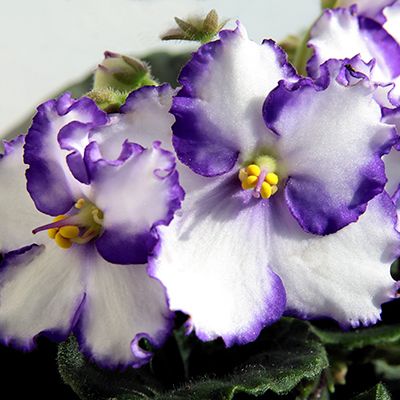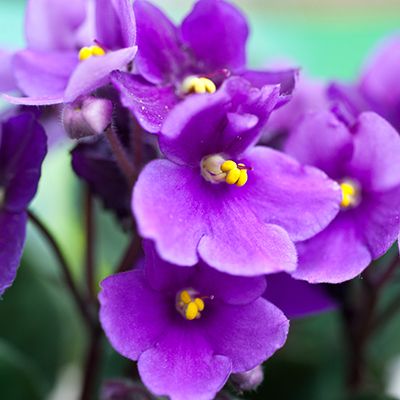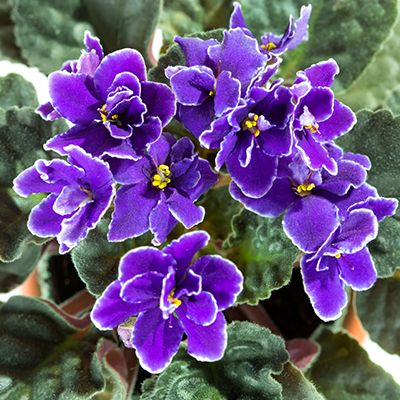


African Violets
One member of the San Mateo County African Violet Society has more than 1000 African violets. Another person has one. Flower colors range from violet, blue, coral, and pink to white. Some have variegated flowers or leaves. Others have ruffled leaves rather than the regular smooth leaves. There are no "boy" plants or "girl" plants as is sometimes inferred.
African violets (Saintpaulia hybrida) were named for Baron Walter von Saint Paul who discovered them while exploring Tanzania in 1892. In their native environment, they grow on the cool forest floor at 2000-3000 feet in well drained soil rich in humus. They receive ample sunlight filtered through the leaves of tall trees. To successfully grow African violets, these conditions should be duplicated as nearly as possible.
Plant your African violets in an African violet mix or a regular potting soil diluted with one-third Perlite. Plants should be repotted when the soil inside the pot is almost completely filled with plant. Let the plants wilt until they become limp before trans-planting then water well after transplanting. African violets are heavy feeders and should be fertilized as instructed on the fertilizer container which will range from a very dilute solution each time the plant is watered to once every month. If timed-release fertilizers (such as Osmocote®) are used, the plants should also be fertilized twice a year with Master Nursery® Fish Emulsion.
African violets grow best at temperatures between 60°F and 80°F. They will stop blooming if placed on the coffee table in the middle of the living room. They need some (filtered) direct sun from behind a sheer curtain or broken by trees or shrubs outside a window. A north facing window with no filtering will probably work too. Remember the rule – No sun, no flowers.
Plants can be watered from the top or the bottom. Use water at room temperature or a bit warmer. If water is cooler than room temperature and touches the leaves, spotting will result. Plants should not be watered again until the top one-third of the soil is dry. With experience, you can lift the potted plant and if it feels heavy, it is wet enough. If it feels light weight, it is probably dry and needs to be watered.
African violets are propagated from leaf cuttings. Select a middle-aged leaf with about three-quarter to one inch of petiole (leaf stem) and insert directly into a two inch pot of African violet mix or the potting soil-Perlite combination. Gently firm the soil around the petiole, water the pot until it drains out the bottom. Now place the pot and cutting in a window with diffused light (no direct sun). A new plant will form at the base of the petiole and force itself through to the surface. Do not fertilize until the new plant is visible.
If you water too frequently or let damp soil pile up around the base of the plant, it will develop crown rot. If the plant has crown rot, the leaves will wilt and the petioles will rot at ground level.
Occasionally, mealy bugs or aphids may infect African violet plants. Spray the aphids with Safer® Brand Insect Killing Soap and the mealy bugs with undiluted rubbing alcohol. Be sure the alcohol covers the entire leaf and flows down to where the leaf and stem join.
All African Violets have equal genetic backgrounds and none are hardier than others.